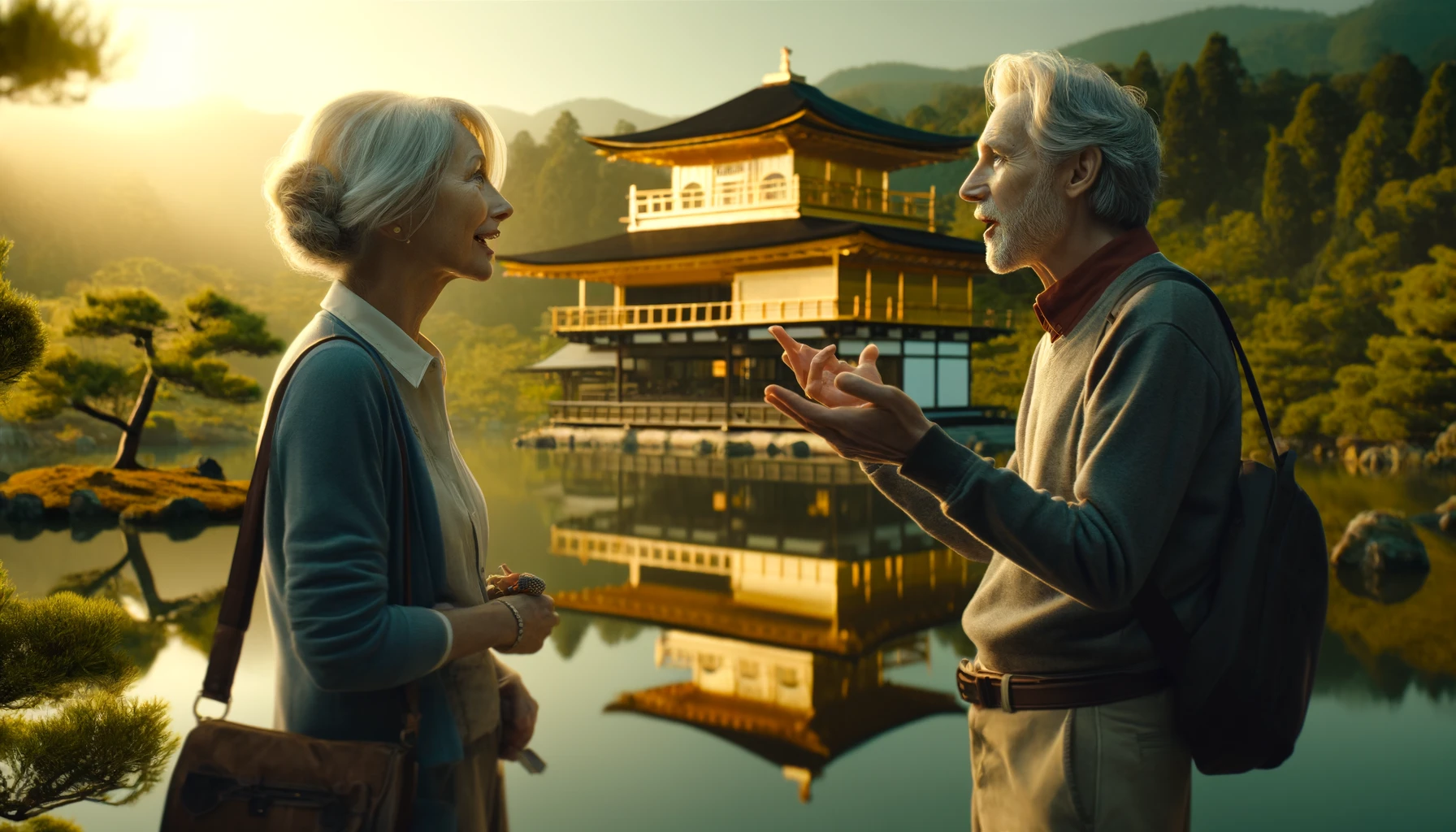Margaret and Harold had been planning this journey for months. As the plane descended into the heart of Japan, their excitement was palpable. Both in their early sixties and recently retired, they were eager to embrace new adventures. Margaret, a retired librarian, had a list of historical sites in Kyoto she was determined to explore, while Harold, a retired engineer, looked forward to experiencing the tranquility of the city’s famed gardens.
Their first day in Kyoto began at the golden pavilion of Kinkaku-ji, reflecting brightly under the morning sun. Margaret’s eyes lit up as she traced the history of the site, explaining to Harold the architectural significance and cultural history. Harold, usually more reserved, was captivated by the serene beauty of the garden that surrounded the temple.
Next, they visited the Arashiyama Bamboo Grove. Walking through the towering stalks of bamboo, the only sounds were the whispering winds and their soft footsteps on the path. It was here, in the cool shade of the bamboo, that Harold felt a deep sense of peace. Margaret, with her lively curiosity, listened intently as their guide described the importance of bamboo in Japanese culture.
As the day wore on, they made their way to Nijo Castle, where Margaret was fascinated by the nightingale floors designed to chirp when walked upon, alerting occupants to any intruders. Harold, with his engineering background, was intrigued by the ingenuity of the ancient security system. They wandered through the opulent rooms, imagining the life of the samurai who once roamed the halls.
In the following days, Margaret and Harold explored more of Kyoto’s rich tapestry. They visited Kiyomizu-dera, a temple perched on the side of a mountain, offering breathtaking views over the city. Margaret was in awe of the temple’s construction, noting that not a single nail was used in its original structure. Harold enjoyed the panoramic views, taking time to photograph the sprawling cityscape below.
Food was another highlight of their trip. They indulged in traditional kaiseki dinners, where each dish was a piece of art, and visited bustling markets where Margaret was eager to try every local delicacy, from sweet mochi to savory takoyaki. Harold, usually less adventurous when it came to food, found himself enjoying the new flavors and textures.
One of their most memorable experiences was participating in a tea ceremony. They learned about the detailed preparation and the philosophy behind each movement, understanding it as a form of meditation. This slow, deliberate practice was a stark contrast to their usually fast-paced lives, and both found it profoundly calming.
Their trip was not without challenges. Navigating the crowded streets of Gion, Kyoto’s famous geisha district, during a festival was overwhelming at times. Yet, it was here that they experienced the warmth of Japanese hospitality. Lost in the crowd, they were helped by a local couple who guided them through the busy streets and even invited them to enjoy festival foods at a street stall.
As their time in Kyoto came to an end, Margaret and Harold felt a deep connection to the city. They had not only seen its landmarks but had experienced its soul. On their last night, they returned to the Arashiyama Bamboo Grove. This time, they found a quiet spot away from the main path, where they could sit and reflect on their journey.
Sitting together, surrounded by the sound of swaying bamboo, Margaret turned to Harold and said, “This trip has been everything I hoped for and more.” Harold, squeezing her hand gently, replied, “Yes, it’s been a beautiful journey. Let’s keep exploring, together.”
As they made their way back to their hotel under the starlit sky, they knew that Kyoto would remain with them long after they had returned home.

